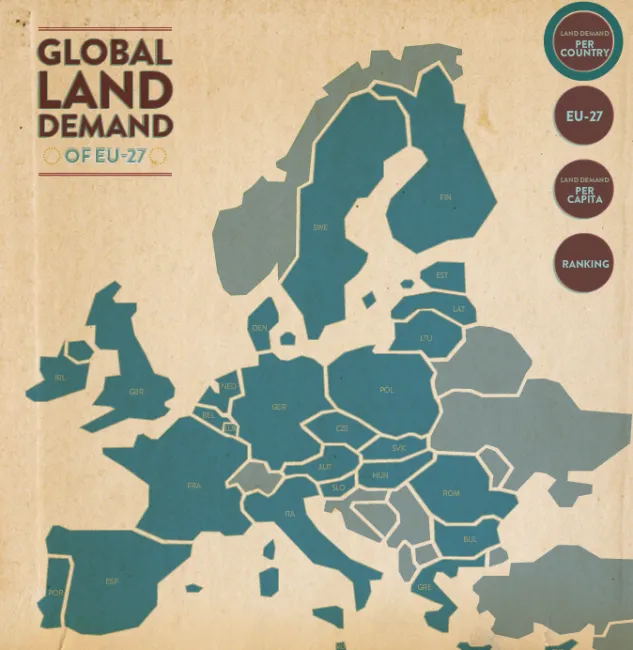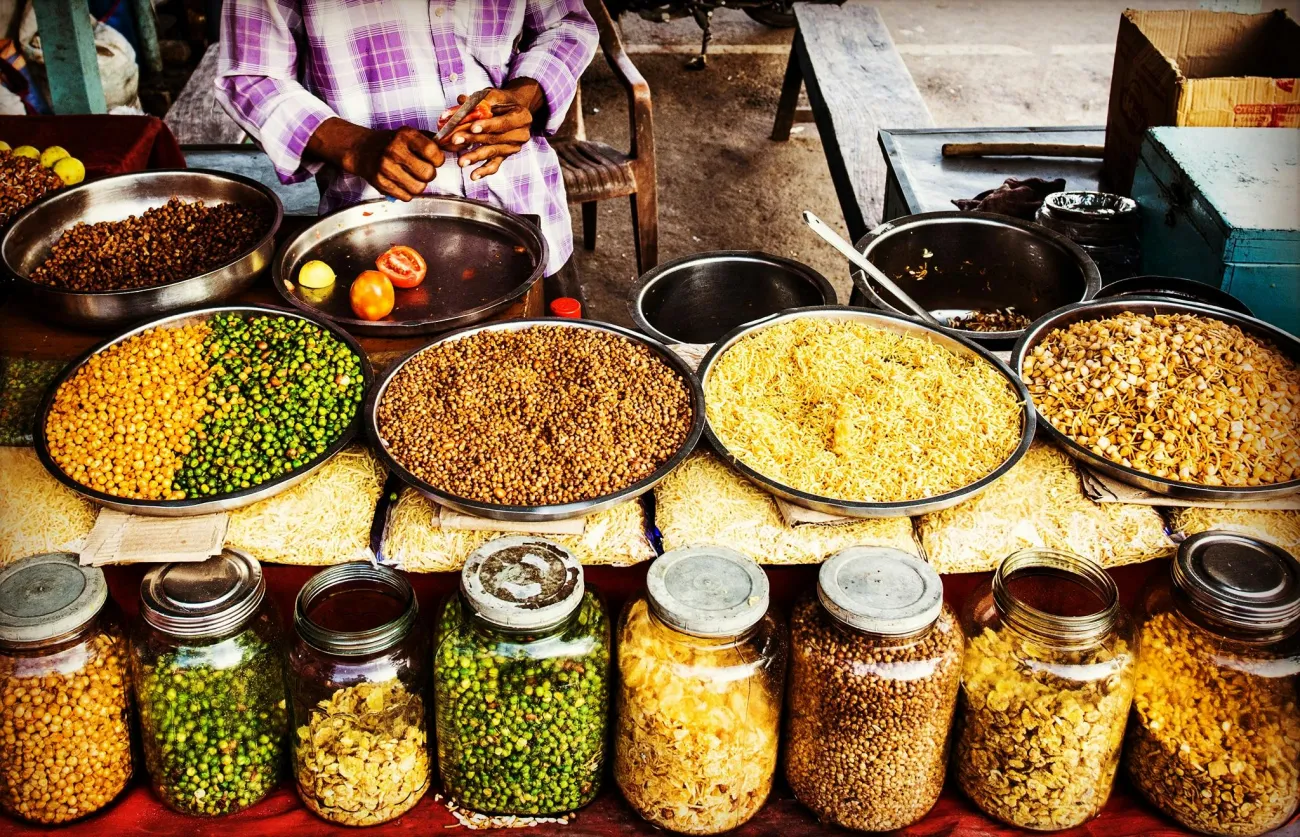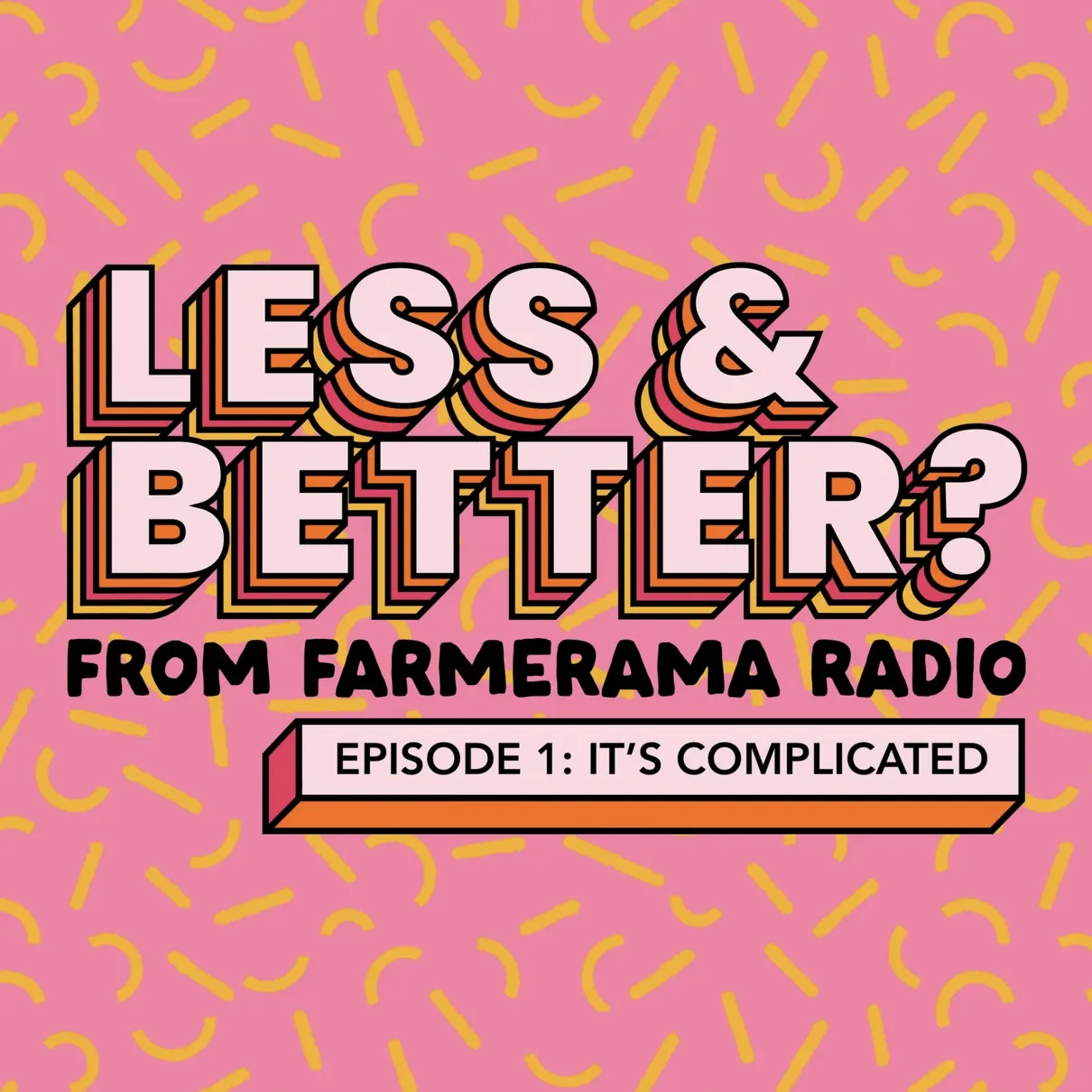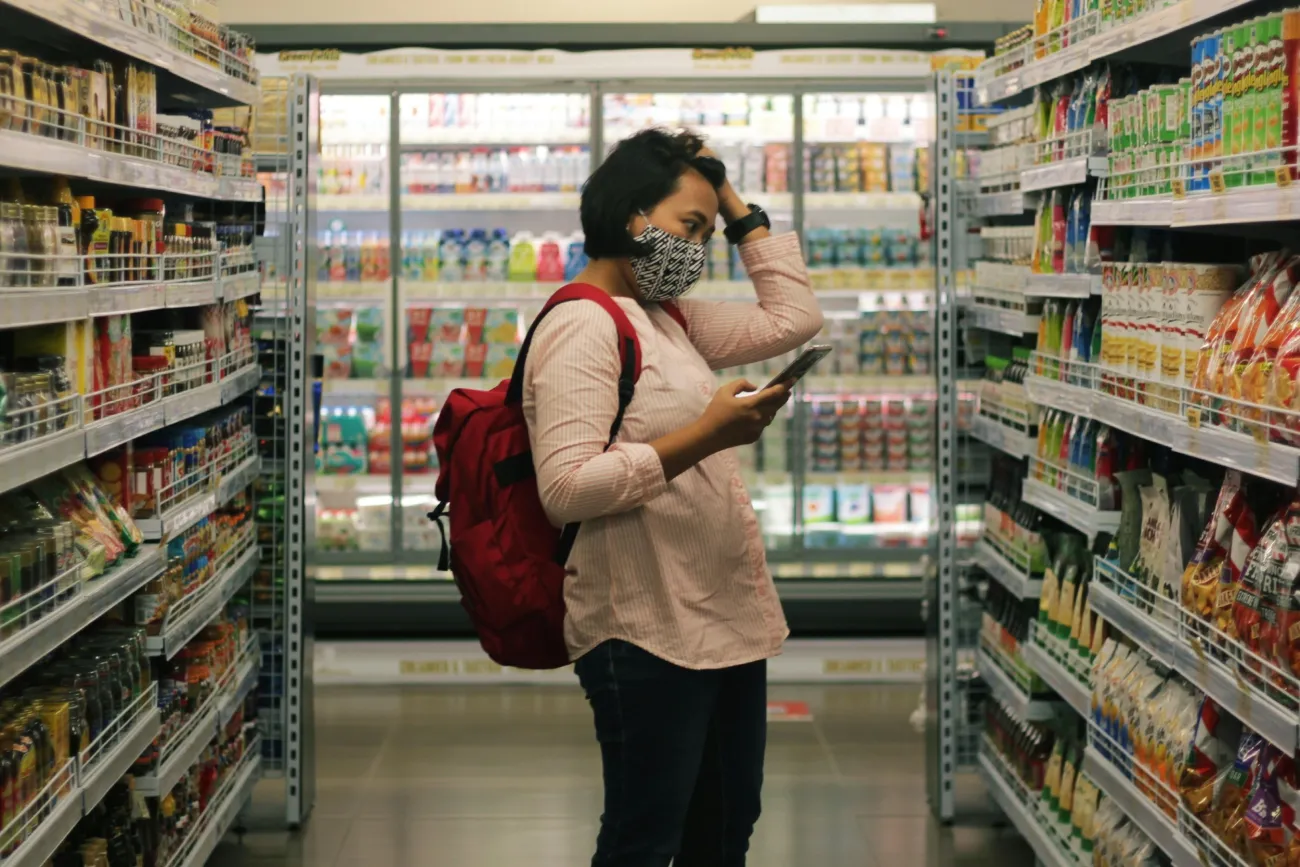This report says that Europe’s high consumption levels of products such as meat, dairy and textiles that require large areas of land, mean that Europe’s 'land footprint' remains one of the largest in the world. The report finds that the EU is importing the equivalent of 1,212,050 square kilometres to meet its demand for food.

This accounts for 45% of the land needed for the production of the food that the EU consumes. This, the report argues, contributes to climate change, biodiversity loss, and negative social impacts like land-grabbing.
The report concludes that, to reduce Europe’s land footprint, it is essential that we drastically decrease our overall consumption, including changes in our consumption of items such as meat, as well as rethink policies that drive resource depletion in other parts of the world. To improve Europe’s and the world’s land management, footprint analyses and land use reduction need to be integrated into national, European and global policies in order to be able to set and measure targets that catalyse the creation of markets for products that have a low land footprint. Alliances between net-importers and -exporters of land should be established, for instance in terms of a common strategy, to efficiently administer and reduce the demand for land. Trade policies need to be modified to ensure socially and environmentally responsible use and trade of land, thereby ensuring that communities that are dependent on local natural resources can retain access to land and other natural resources in order to sustain their livelihoods. It is also imperative that Europe creates domestic and trade policies that encourage alternative, more sustainable methods of production that respect the natural processes of land and surrounding ecosystems, whilst simultaneously decreasing the application of industrial agricultural methods that are causing massive environmental and social harms, such as the application of artificial fertilisers and pesticides.
You can download the report here.
FoE Europe has also produced an infographic that shows how much of an individual European country’s demand for agricultural products is met by using land from outside its borders. In the case of the UK, the figure is 60%.




Comments (0)